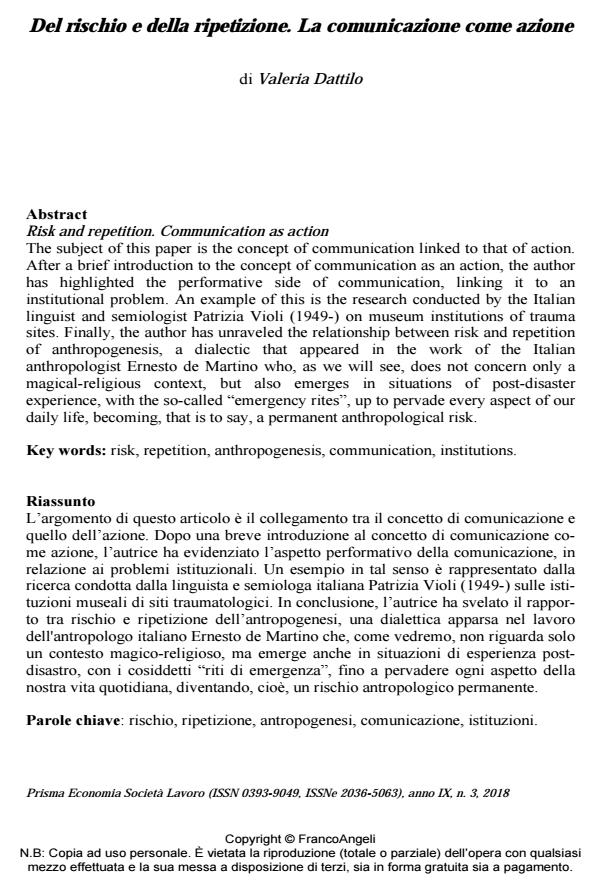Risk and repetition. Communication as action
Journal title PRISMA Economia - Società - Lavoro
Author/s Valeria Dattilo
Publishing Year 2019 Issue 2018/3
Language Italian Pages 16 P. 30-45 File size 209 KB
DOI 10.3280/PRI2018-003003
DOI is like a bar code for intellectual property: to have more infomation
click here
Below, you can see the article first page
If you want to buy this article in PDF format, you can do it, following the instructions to buy download credits

FrancoAngeli is member of Publishers International Linking Association, Inc (PILA), a not-for-profit association which run the CrossRef service enabling links to and from online scholarly content.
The subject of this paper is the concept of communication linked to that of action. After a brief introduction to the concept of communication as an action, the author has highlighted the performative side of communication, linking it to an institutional problem. An example of this is the research conducted by the Italian linguist and semiologist Patrizia Violi (1949-) on museum institutions of trauma sites. Finally, the author has unraveled the relationship between risk and repetition of anthropogenesis, a dialectic that appeared in the work of the Italian anthropologist Ernesto de Martino who, as we will see, does not concern only a magical-religious context, but also emerges in situations of post-disaster experience, with the so-called "emergency rites", up to pervade every aspect of our daily life, becoming, that is to say, a permanent anthropological risk. Key words: risk, repetition, anthropogenesis, communication, institutions.
Keywords: Risk, repetition, anthropogenesis, communication, institutions.
Valeria Dattilo, Del rischio e della ripetizione. La comunicazione come azione in "PRISMA Economia - Società - Lavoro" 3/2018, pp 30-45, DOI: 10.3280/PRI2018-003003